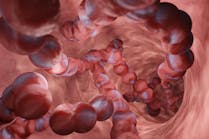Edited by Brad S. Karon, MD, PhD
24-hour urine-collection measurement
Question
How accurate is it to measure a 24-hour urine specimen by the volume markings on the collection jug as opposed to measuring with a 1L or 2L graduated cylinder? We have always used a graduated cylinder, but some local hospitals use the jug markings. It would certainly save time to use the jug for measurement, as well as cut down on splashes.
Answer
The main issue with 24-hour urine collections is that patients have a hard time following instructions to collect all urine in a 24-hour period. This results in urine volumes that do not reflect the actual amount of urine produced over 24 hours and, in the end, impacts the ability to accurately measure the amount of any substance excreted in urine over 24 hours. For this reason, and because 24-hour urine collections are inconvenient for patients, there has been a movement toward finding alternatives to the collection of timed urine specimens. This involves developing new tests or demonstrating that alternative tests are as predictive as the more cumbersome tests involving timed urine specimens. Currently, however, there are still many tests that call for the collection of timed urine specimens.
The issue with using the markings on the collection container relate to both the accuracy of the markings and the number of markings (generally few requiring extrapolation by eye to determine volume). Because patients do not always return a specimen that reflects the amount of urine produced over 24 hours, many labs choose to measure the volume of urine returned with a certified volumetric device to ensure the volume of urine used for calculations is as accurate as possible. In our lab, this amounts to additional labor due to the high volume of tests done, so we recently evaluated a more expensive jug that had more accurate markings (and also more markings, which makes extrapolation between markings unnecessary). We found the new container is accurate enough to avoid having to use a cylinder to measure urine volume returned, but the new containers are significantly more expensive.
It is a good idea to measure volume in a certified volumetric device unless one of the new, more expensive collection containers is used and its accuracy is validated against a certified measuring device. In the end, it may not make much sense to use the more expensive containers unless the lab is doing a fairly high volume of testing.
—
Brad S. Karon, MD, PhD
Director
Hospital Clinical Laboratories
and Point-of-Care Testing
Mayo Clinic
Rochester, MN
Cleansing avoids blood-culture contamination
Question
We are converting to using Chlorascrub for our blood-culture draws. The lab thinks it is necessary to use the alcohol swab and the CHG swab. Is it? Also, arterial blood-gas collection currently involves the use of alcohol swab and iodine swabs. Can you provide me with some guidance so I can assuage any resistance to the change in procedure?
Answer
The requirement by the laboratory for a alcohol pre-cleansing step is probably well founded and should be observed. Even though Chlorascrub is a one-step product, it is likely that blood cultures being collected still have a high rate of contamination.
Contaminated blood cultures are costly to the facility and the patient. One study showed that contaminated blood cultures can increase a patient's hospital stay by as much as 4.5 days and add more than $5,000 to the cost of treatment (adjusted for inflation since the study was published).1,2 Another study published the results from a hospital that incurred an annualized cost from contaminated blood cultures of $1.4 million to $1.8 million.3 The contamination also resulted in 2,200 additional hospital days per year. More importantly, contaminated blood cultures keep patients from reclaiming their daily lives.
The laboratory has a valid reason for the additional alcohol pre-cleansing step, and it is in the best interest of both the patient and the facility. Monitoring compliance with the manufacturer's recommended use of the product might reveal why the laboratory is requiring the extra step.
According to Clinical and Laboratory Standards Institute, or CLSI, and the American Association for Respiratory Care, or AARC, 70% isopropyl alcohol is a suitable site-preparation solution for arterial blood gases.4,5 The use of chlorhexidine is likely an extra measure of prevention against infection.
—
Dennis J. Ernst, MT(ASCP)
Director
Center for Phlebotomy Education
Corydon, IN
Reference
- Bates DW, Goldman L, Lee TH. Contaminant blood cultures and resource utilization: the true consequences of false-positive results. JAMA. 1991; 265:365-369.
- Schifman R. Editorial. Mayo Clin Proc. 1998;73:703-704.
- Zwang O, Albert RK. Analysis of strategies to improve cost effectiveness of blood cultures. J Hosp Med. 2006;(9)(5):272-276.
- Clinical and Laboratory Standards Institute. Procedures for the Collection of Arterial Blood Specimens; Approved Standard—Fourth Edition. Wayne, PA: Clinical and Laboratory Standards Institute; 2004. CLSI document H11.
- AARC Clinical Practice Guideline: Sampling for Arterial Blood Gas Analysis. http://www.rcjournal.com/cpgs/sabgacpg.html. Accessed March 7, 2011.
Brad S. Karon, MD, PhD, is associate professor of laboratory medicine and pathology, and director of the Hospital Clinical Laboratories, point-of-care testing, and phlebotomy services at Mayo Clinic in Rochester, MN.





